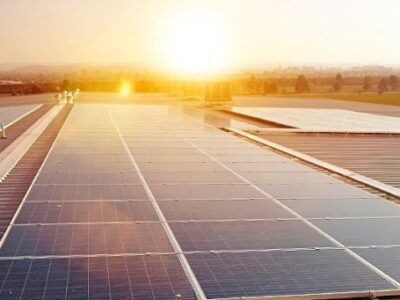It’s a pivotal time in the American job market. Renewable energy is in the news every day and there are now more Americans who call themselves clean energy workers than ever before. The economic tide is turning toward renewable energy, with Goldman Sachs predicting that 25 percent of all energy spending will target clean energy in 2021 and that the annual investment in renewable infrastructure will total $16 trillion by 2030. That’s right, 16 trillion.
Employment in the renewable energy field is, simply put, the future. As of 2019, it employed nearly 2.5 million workers, with enormous growth set over the next decade. It’s a job field that expands regularly, and millions of Americans across an array of occupations are qualified to work within it. It is booming like no other industry across the world. The job growth is even exceeding all expert predictions: more than 24 million new jobs are expected in the next decade.
So, what is a clean energy worker? These are workers employed by solar, wind, and geothermal companies, or by the manufacturers of LED lighting and energy-efficient appliances. These are jobs in bio-fuel and hydropower, decarbonization, and bioenergy. It’s electricians, plumbers, welders, roofers, mechanical trade technicians, construction workers, salespeople, service techs, marketing professionals, managers, and mechanics. And they are all needed to keep the clean economy booming.
Clean energy jobs are available in four main areas: energy efficiency, renewable energy, clean vehicles, and grid and storage.
Let’s Take a Look at Working in Grid and Storage
First off, what are grid and storage technologies? Grid is the large-scale system through which energy flows to bring the power of any form to homes and businesses. Storage is the process of converting energy into a stored form that can later be converted back into energy when needed. The most common example is a battery, a form of electrical energy storage we’ve all used. Research in this type of energy storage has increased dramatically since the oil crisis of the 1970s. Experts believe the impact storage can have on the current and future sustainable energy grid is substantial. The main types of storage are hydroelectric storage, compressed air energy storage, advanced battery storage, flywheel energy storage, thermal energy storage, and hydrogen energy storage. This is an emerging field overall with new technologies being developed regularly.
The United States Department of Energy (DOE) is now funding 16 large-scale energy storage projects, with a more recent focus on long-term and seasonal storage of hydrogen, compressed air, and hydropower. California, Texas, Florida, Illinois, and Massachusetts lead the way with these projects, though the work is now spreading across all 50 states. Cities including, but not limited to New York, Los Angeles, San Francisco, Houston, Miami, Detroit, and Atlanta are eager for new clean energy workers.
More than half of the jobs in grid and storage are in clean energy storage, with other opportunities in grid modernization and smart grid development.

Source: e2.org
Clean energy is truly at the heart of America’s expanding construction needs. Updating, repairing, and constructing new grid systems and developing technologically smart ways to store energy are two of the most exciting new fields in this sector. Grid and storage is a vital component of our nation’s move toward a truly clean energy economy. The nation’s 98,000 public schools and government-owned buildings at more than 800 military bases are certainly worthy of energy grid upgrades, projects that are likely on the horizon.
Schools and military bases aren’t the only places that need a power grid update. America should be prepared to modernize our infrastructure by investing between $30 and $90 billion to upgrade all transmission lines to handle the new renewable energy sources. Equipment across the country is old and beginning to fail. Updates can prevent forest fires, and employ hundreds of thousands of grid and storage workers. Suburbs and small towns are significant areas of new growth, with many regional grid and plan managers struggling to stay ahead of the demand.
Job types vary from project developer to energy analyst, electrician to sales manager – and in many cases, job boards indicate the need for these positions is “urgent”. Having previous grid and storage experience is rarely a prerequisite for these positions. A great resource for a job search is the Solar Energy Industries Association, check out their extensive guides and job listings here.





